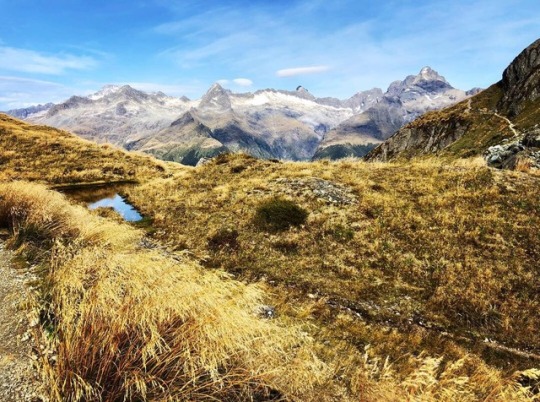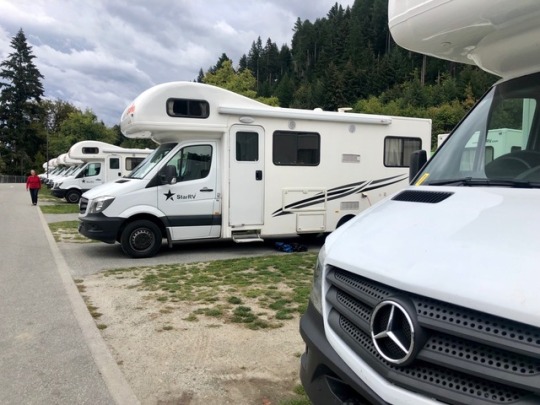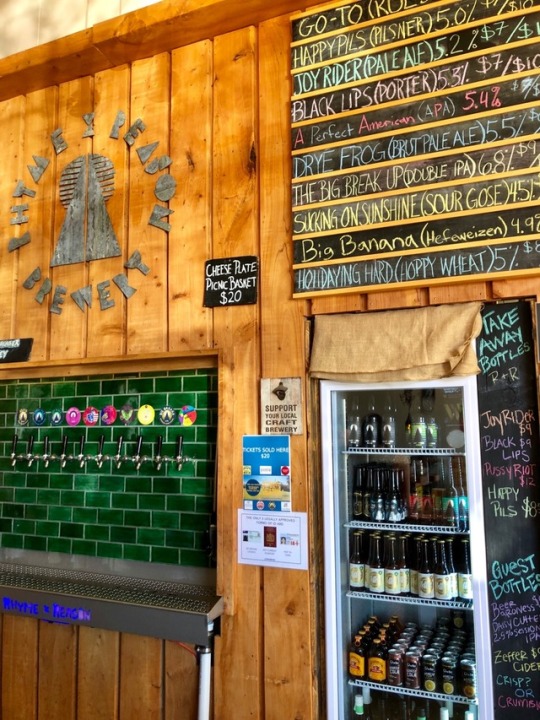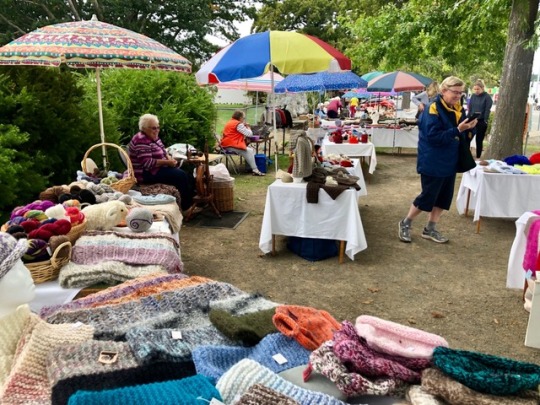#no one look at the shitty cropping on douglas
Explore tagged Tumblr posts
Text

design breakdowns for what the kids got from which father (which really just means grandmother vs grandfather genes lol)
messy but oh well
#anywho chase and adam are clones of douglas and donald respectively with bree being a douglas-leaning mix#forgot to add that adam's skin tone is douglas's#and his bad eyesight (and chase's) are from donald though adam's is more severe from heat vision damage#no one look at the shitty cropping on douglas#or the AGE of that donald picture#that was literally the most recent one i could find#lab rats#lref#elite force#lab rats elite force#chase davenport#bree davenport#adam davenport#douglas davenport#donald davenport
9 notes
·
View notes
Text
New Zealand: Then and Now
“Only the mountains know where they have come from and where they are going and what will happen when we are gone.” —Brian Turner, “Listening to the Mountain” (1985) as seen at the Sir Edmund Hilary Mountaineering Museum

The electric blue waters are still electric blue. The peaks still tower above. The rolling green hills still conjure images of hobbits and orcs, but a lot has changed in New Zealand since Spanky and I first visited a decade ago on our inaugural trip around the world and then again just five years ago when we spent two months of the South Island alone. We returned this time for six weeks on the South and were both comforted by the sameness and shocked by some of the major changes over the years.
So, what’s changed?

Bigger vans, less freedom camping
Ten years ago you’d be hard pressed to find anything other than one of those rapey-looking Wicked campervans (made rapey-er still by sayings such as “Let’s take off our pants and cuddle”). Now, the van rentals are taller, longer, have a more sterile, hospital appearance and usually come with a Mercedes-Benz logo on the front. The hippie backpackers are still around, but as is the case in so many places in the world, the gap seems to be widening—and the travel climate is a perfect metaphor. You’ve got the rich, gray-haired travelers with their $10,000-per-month Maui and Britz vans juxtaposed by the dirt poor, 20-something Euro backpackers who bought some shitty, no-name van for $3,000 and will sell it back after their visa runs out in a year for $2,000. They’re the ones dropping trou in the parking lot to change out of the harem pants they’ve been wearing for the past 17 days; you know ‘em when you smell ‘em, I mean, see ‘em. The in-betweeners like Spank and I are becoming a rare breed, though mid-range Jucy vans like the one we rented for $2,500 for six weeks are pretty common (renting one also comes with the very serious duty of waving happily and flashing your lights every time you pass another bright green and purple van on the road #jucytribeforlife). Still, there aren’t a whole lot of 30-somethings out on the road, which is exactly why we excitedly accepted the offer of Jaeger shots from a pack of four American guys in Queenstown—uh, only someone who hit their drinking prime in the early 2000s orders Jaeger shots; it’s basically a telltale sign of someone well on his or her way toward a midlife crisis. That and getting way too amped when 50 Cents “In Da Club” comes on at the pub.

Aside from the upgrade in van sizes, New Zealand has cracked down a bit on freedom camping. We went back to some of our old off-the-road parking spots and they now have “No overnight camping” signs in where we once set up our picnic table and chairs. It’s sad, but I understand that they don’t want tourist dumps all over the place. I don’t blame them one bit, especially considering most tourists are from the city and don’t know how to properly dispose of their dumps. I mean, hello, have you ever been to San Francisco? If not, this is your courtesy warning: Watch your step; that wasn’t Fluffy.

Better beer
No, we didn’t just drink Jaeger shots and Sauvignon Blanc on this NZ trip. We also dabbled in hops, and what we found were IPAs and APAs and, heaven forbid, Sour Gose! That’s right, New Zealand has arrived on the beer scene. Just five years ago you were lucky to find anything other than a pilsner or lager—think Bud and Coors. Not only are their beers more varied now, but they’ve got the whole locale down. In Wanaka we stumbled on the brewery Rhyme & Reason bumping 90s gangsta rap and sandwiched next to a CrossFit gym in the industrial part of town. Wait, are we in America??

More rich people—more people, in general
With the campervan shift comes a shift in the demographic. Not only are there more travelers, but there are just more people in New Zealand than when Spank and I first visited a decade ago. It’s one of those heartbreaking realities when your special little spot is discovered by the masses. Thanks a lot Frodo. I blame you and your hairy, hobbit feet. You just had to go tramping all over Aeotera pretending it was Middle Earth and showing everyone how raw and unique it was. “Frodo!” (*In the voice of Jerry Seinfeld cursing his nemesis Newman.)
There aren’t just more people; there are more people with coin to throw down. They put a Louis Vuitton on the Queenstown waterfront overlooking Lake Wakatipu for sobbing out loud. Bleh. And, the housing market has followed suit. There are new houses and condos being built by the Chinese tourist busloads, which is to say there are a lot and they just keep coming. And, we heard a Kiwi throw out a figure like “the average Kiwi makes $40,000 and the average house is $1 million.” There went our dreams of buying a house in New Zealand—it’s as bad, or worse, than the California housing market right now. Plus, the Kiwis apparently passed legislation to keep us outsiders from buying property. Again, I can’ blame them. They are struggling dearly to keep their Kiwiness in tact, and having one hell of a time doing it.
It’s lost a little luster
All this to say that New Zealand will always have a special place in our hearts, but it has lost a little of its luster. It probably didn’t help that we hiked in the Himalayas and Chile’s Torres del Paine then drove the Canadian Rockies to Alaska and back two years ago; those sights didn’t totally trump the natural gems of NZ, but they did give it a good run for its money.
One more thing: There are still sandflies...and I still hate them.
Still, a lot has remained the same...

Natural beauty and Kiwis ideas of conservation
People love to idealize Kiwi concepts of conservation without really understanding them. Sure, they want to preserve their native species, but the ones that aren’t native? You dead. I mean, they mow down red deer, tahr, opossum and stoat with extreme prejudice. Good for them. Kiwis realize which critters were here and which ones were brought over later on, and they don’t try to protect the ones they knowingly brought over. They could care less about those, really. Plus, they aren’t too proud to say, “Yeah, we screwed up when we were trying to play God.” Americans, however, tend to want to protect everything—native or non-native. In every hut along the Routeburn Track we heard about the nuisance of the stoat and the traps set out for them. The hut wardens were unapologetic about snapping their little stoat necks to save the precious native birds; I admired their transparency and lack of political correctness.
Kiwis also treat timber as a renewable resource, a crop that is cut down and replanted. Drive around and you’ll see neatly lined rows of Douglas Fir all the same height ready for harvest one day. It’s like one giant tree farm. Again, we want to save, save, save to the point that a fire comes along and happily gobbles up the whole lot that has not been thinned or taken care of, and boom, it’s gone just like that, but that’s another soap box for another time. Don’t worry, I won’t even touch immigration or gun control with a 10-foot pole right now.
Of course, what I love the most about New Zealand is the natural beauty, and though the throngs of people ruin that for me a bit, you can still escape and get off the beaten path and away from the masses. It’s all about choosing places that aren’t listed on every tourist site (i.e. the Hooker Valley Track at Mt. Cook that was just overrun with people) and choosing longer hikes (the longer the hike the fewer people up for the challenge, which means more high-altitude sights all to yourself!)
Incredible amount of access to the outdoors
Despite the restrictions on some freedom camping, there is still so much access to the outdoors. You can’t throw a stone and not hit one of those little yellow and green Department of Conservation signs. You see them wherever you go, and they signify a track or conservation camping area but most of them mark out tracks aka hiking trails. New Zealand just recently opened a nearly 2,000-mile thru-hiking trail from the North to the South Island on top of the huge amount of trails they already have. They continue to add new Great Walks, all of which have fantastic hut systems for overnighting backpackers. In total, New Zealand has nearly 1,000 huts so people can explore and enjoy the outdoors.

Kindness of Kiwis
I hope they never lose this, but as countries “progress” toward consumerism and what ultimately just feels like the almighty goal of Americanness and thus sameness, people seem to care less for each other and more about getting ahead. I still didn’t feel that overwhelmingly in New Zealand, but it’s a slow fade. It sneaks in. Plus, we spent next to no time in the larger cities, where I tend to feel that fade the most. All in all, we still sense that Kiwi hospitality. Backpackers still hitchhike without fear of being abducted or mugged and they still open their homes to perfect strangers, as we experienced with the gracious Kiwi couple from Nelson that we met at the Hokitika Wild Food Fetival amongst another group of friendly Kiwis. Even in Queenstown, where there are very few born-and-raised Kiwis, we met a group of timber guys (i.e. loggers) from NZ and hit it off right away. Before even speaking they were buying us a favorite spirit and cozying up next to the fire with us for a chat about politics, which went rather well, considering we shared many of the same views. I just hope these Kiwis can withstand the change of time and not end up on the endangered list like their national bird.
1 note
·
View note